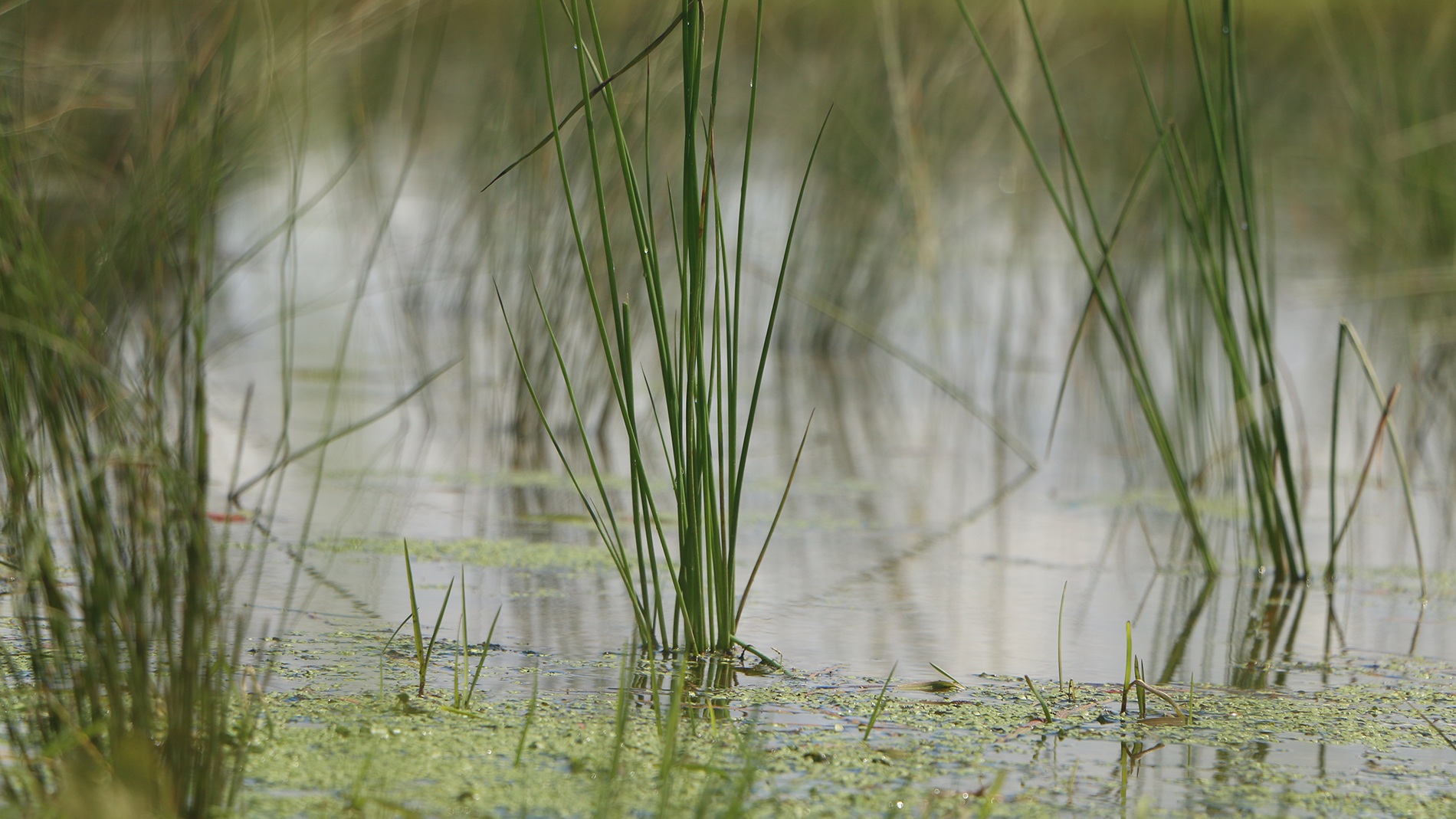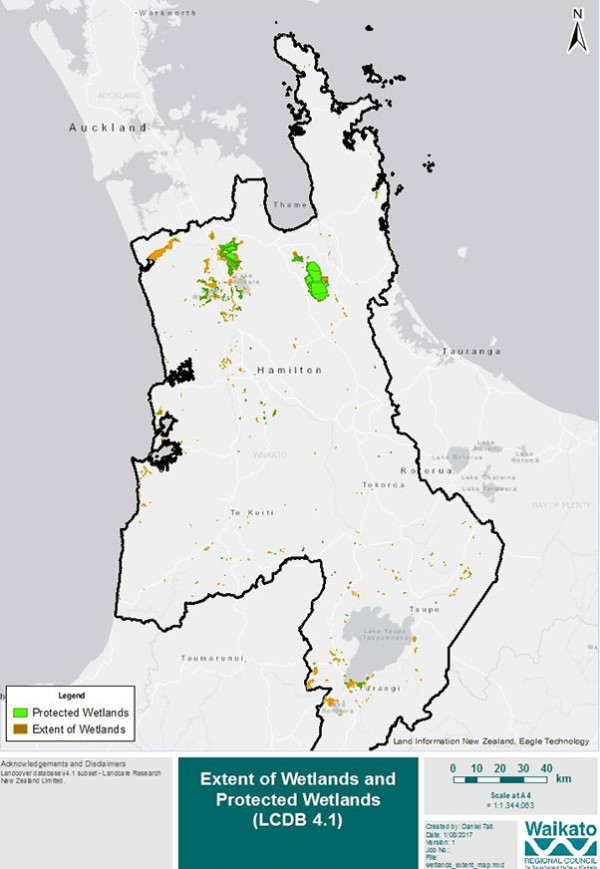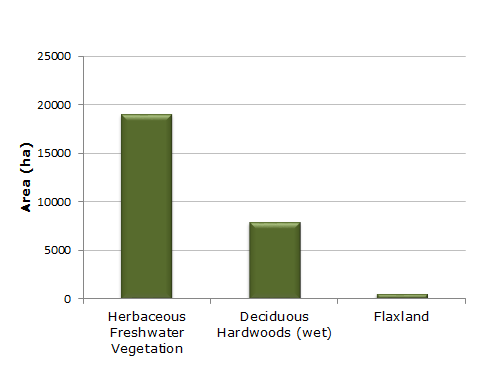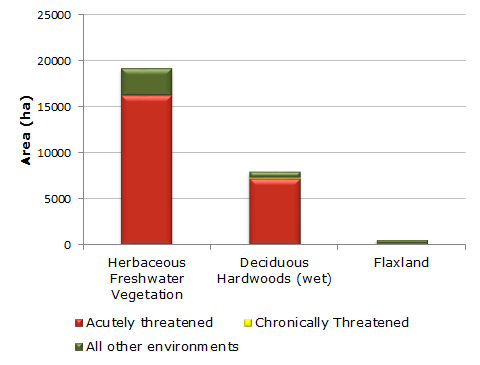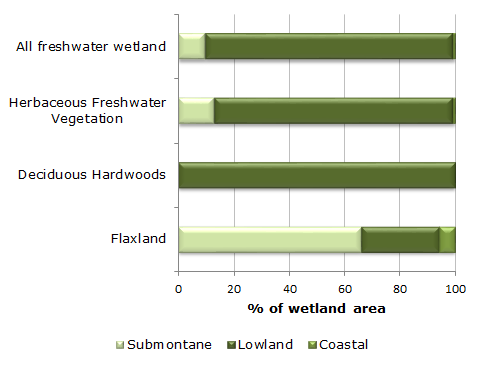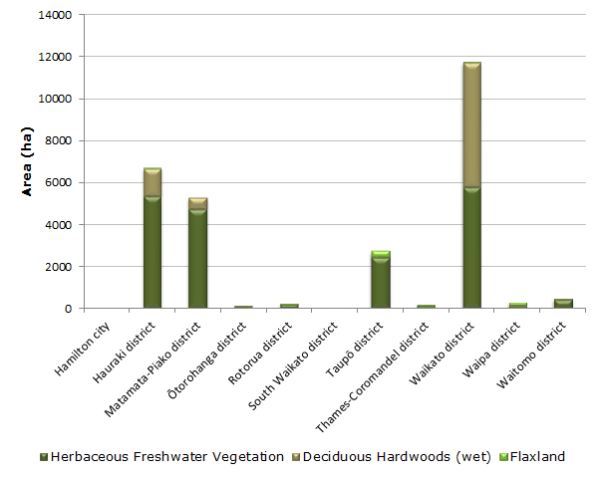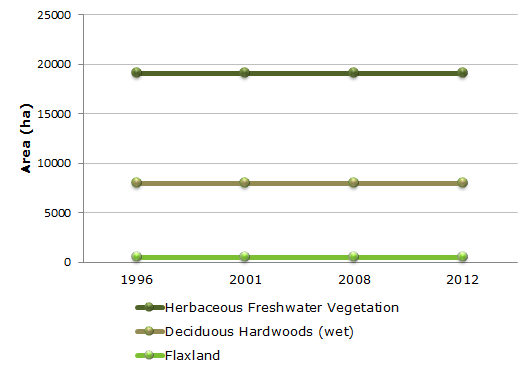Why we monitor the extent of freshwater wetlands
Wetlands are an important storehouse of indigenous biodiversity. Native plants and animals, and the wetland ecosystems they form, are valued for their unique genetic diversity, cultural and spiritual importance, scientific interest, recreational opportunities and intrinsic values. In addition wetlands provide many environmental services, improving water quality, storing carbon, and reducing the effects of floods.
Yet wetlands are a severely depleted and often degraded ecosystem type. Nationally an estimated 90 per cent of the pre-human extent of wetlands has been cleared and drained1.
The Waikato region remains a North Island strong-hold with almost 8 per cent of its original (pre-human) freshwater wetland extent remaining (compared with 5 per cent for the North Island as a whole)1. An estimated 44 per cent of all of the North Island’s remaining freshwater wetlands occur in the Waikato region1, which also has three of New Zealand’s six Ramsar Wetlands (sites of international significance).
Change in the extent of remaining wetlands may affect the diversity and security of native species.
This indicator describes and quantifies the spatial extent and distribution of freshwater wetland vegetation and how that has changed over time. Waikato Regional Council uses the Land Cover Database (LCDB) to monitor current freshwater wetland vegetation. Landcare Research have estimated pre-human1 and pre-European2 extent of freshwater wetlands in the Waikato region.
Monitoring trends in the type, location, and extent of freshwater wetland vegetation gives us valuable information on how well we are maintaining our region's unique freshwater biodiversity.
Monitoring wetlands helps us to:
- find out where wetland areas have been lost (for example through drainage), or gained (for example through wetland creation on retired pasture)
- gain information on where land use pressures are occurring, to help us identify policy responses to avoid or reverse adverse effects on wetland biodiversity
- find out what geographic areas have lost the greatest amount of freshwater wetland
- measure the spread of invasive canopy species such as grey or crack willow.
The monitoring outcomes can therefore guide adaptive management and policy decisions for biodiversity management planning.
What's happening?
Before European settlement (around 1840), native vegetation covered most of the Waikato region. It is estimated that about 108,463 hectares were freshwater wetland (4.5 percent of the region). The largest areas were peat bogs near the lower Waikato River, north of Cambridge, and in the Hauraki Plains. There was no Deciduous Hardwood wetland vegetation because those canopy forming deciduous trees had not yet been brought to the Waikato.2
Today, a quarter of those pre-European wetlands remain. The current (as of 2012) extent of freshwater wetland in the Waikato region is 27,484 hectares, covering approximately 1 per cent of the region’s total land area. The largest remaining areas, Kopuatai Peat Dome and Whangamarino Wetland, are internationally significant.
Over 86 per cent of all of the remaining areas of freshwater wetland in the Waikato Region occur within National Priority 1 Environments.
Freshwater wetlands occur mostly in lower elevations, with 89 per cent of the current extent found in the lowland bioclimatic zone. Flaxland tends to occur at higher elevations, with 66 per cent of the remaining Flaxland in the Submontane Zone (300 to 800 m elevation)
The Waikato, Hauraki and Matamata-Piako districts collectively hold 86 per cent of the region’s extent of freshwater wetland. Extensive areas remain in the lower Waikato Valley and Hauraki Plains, where the internationally significant Ramsar wetlands (Kopuatai Peat Dome and Whangamarino Wetland) are found.
Between 1996 and 2012 there was very little recorded loss of freshwater wetland with just a 7 hectare loss of wetlands of Deciduous Hardwoods and net 7 hectare loss of Herbaceous Freshwater Vegetation.
Methods - how we monitor
Results - data and trends
Download the data file
This Excel spreadsheet contains the source data for this indicator's graph and information.
More information
When this indicator is updated
Updates will happen as new (region-wide) vegetation/cover spatial layers become available. It is estimated that this will be updated every five years.
Last updated July 2017.
Footnotes
1. Ausseil A-G, Gerbeaux P, Chadderton WL, Stephens T, Brown D, Leathwick J 2008. Wetland ecosystems of national importance for biodiversity: criteria, methods and candidate list of nationally important inland wetlands. Landcare Research Contract Report LC0708/158. 174 p
2. Leathwick, J. Clarkson, B. and Whaley, P. 1995: Vegetation of the Waikato Region: Current and Historic Perspectives. Landcare Research Contract Report LC9596/022. Landcare Research, Hamilton.

